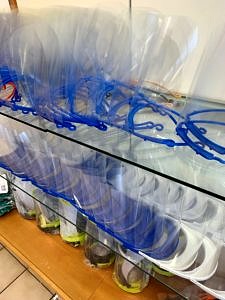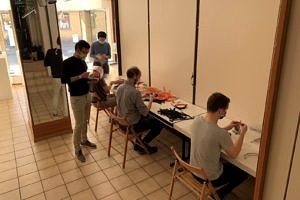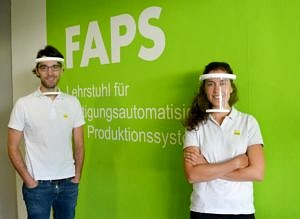Using 3D printing to tackle the crisis

Students print protective equipment
One of the major challenges we are facing at the moment is how to provide doctors’ surgeries and care homes with enough protective equipment. Bearing this in mind, FAU students have launched the initiative ‘3D-Druck gegen Coronavirus’ (3D printing against the coronavirus) in order to help doctors’ surgeries and care homes by supplying them with the materials they need.

The initiative was founded by an FAU student who helps out in the FAU-Fablab. That is what gave him the idea: ‘The Fablab received an e-mail from the Bavarian Research Alliance asking for assistance. I then asked around and managed to organise 3D printers and material for them,’ explains the student. The friends, acquaintances and professors he approached forwarded his e-mail to their contacts. In no time at all, he received more than 500 e-mails which he replied to together with his flatmate. Although they did receive their fair share of criticism, a lot of people offered to help. In the end, the student managed to arrange seventeen 3D printers, roughly 50 kilogrammes of material and a large number of helpers to service and monitor the printers or assemble the final products. ‘Not only that, a small company from the region offered us all its printers, its materials and two engineers who are also able to help design new parts or masks. That is really great.’

The students from ‘3D-Druck gegen Corona’ have since started to cooperate with the FAU-Fablab, the Chaos Computer Club (CCC) Erlangen and MakerVsVirus Erlangen, an initiative which brings together people with experience in 3D printing and organisations which need equipment. Whilst MakerVsVirus arranges the material and organises planning, 3D-Druck gegen Coronavirus coordinates the assembly and distribution of the products. The space they need has been provided by the Fablab and CCC.
They are also in touch with the ‘Mobility goes additive’ network which intends supporting the European Commission with masks printed on 3D printers and is looking to involve others with expertise in additive manufacturing. In video conferences with the network organisers, the FAU student has a valuable contribution to make based predominantly on his experience in working with different materials. ‘Not all materials which are used for printing are suitable for use in a medical setting. For example, autoclaving the commonly used substance polylactide (PLA), in other words sterilising it at temperatures of above 100 degrees Celsius, causes it to degrade. He has already printed prototypes and sent them to the organisation. The students are therefore prepared to cope with any future bottlenecks in material supplies.

Other Initiatives aimed at helping others
On our website ‘Initiatives aimed at helping others’ you can find other initiatives involving researchers and students at FAU.